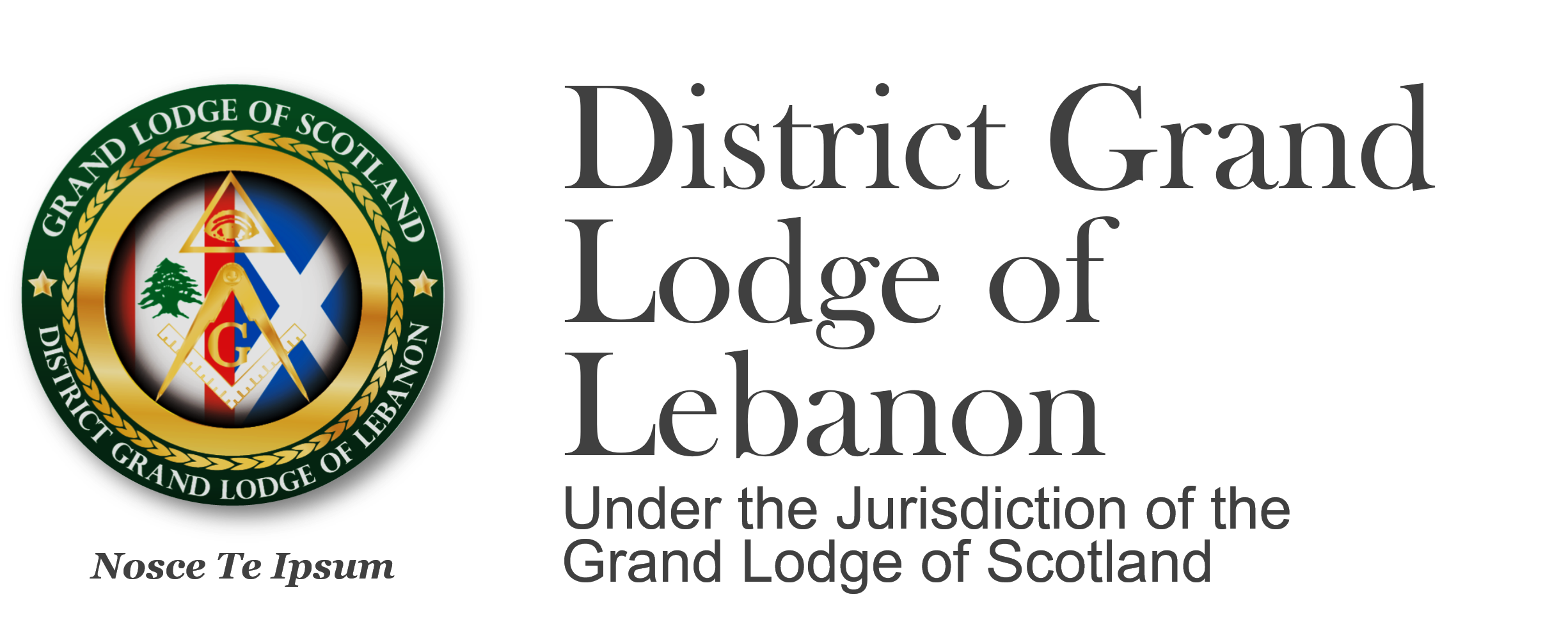Brief History of Lodge Palestine No. 415
LODGE PALESTINE No. 415 was chartered in May 6th 1861 by courtesy of the Grand Lodge of Scotland,
at a meeting of the Grand Committee held at Freemason’s Hall on March 4th 1861, with the presence of the M. W. Grand Master George Augustus Frederick John, Lord Glenlyn, afterwards sixth Duke of Atholl in the chair.
The committee had received an application for a Charter for a new Lodge in Syria (Lebanon at present time) to be called THE LODGE OF PALESTINE. This application was received through the Marquis of Tallibardine by the hands of Colonel Burnaby, Commissioner of the British Government to the French. Colonel Burnaby intended to return to Syria immediately and the parties were most anxious that the Charter should if possible be taken out with him.
At a meeting of the Grand Lodge held at the Freemason’s Hall on May 6th 1861. The Resolution of the Grand Committee was confirmed and a Charter issued on May 6th 1861.
In 1868, Palestine Lodge had a membership of about 75 members, scattered all over Syria, with a substantial number in Beirut . It had a succession of eminent Masters and drew its members from the elite of society and the intelligentsia of the people, especially from the ranks of the American and English Schools of Higher Education, and the merchant class that represented British, French and other European firms. It is well to note that among its members were:
– Brother G. J. Eldridge . H. B. M’s Consul General in Syria, Past Master of the Lodge. He was endowed with special powers for the extension of Freemasonry in the country.
– Brother Dr. R. W. Brigstock. For many years leading gynecologist in the city of Beirut.
– Brother E. T. Rogers For many years H. B. M’s Consul at Haifa Bro. Rogers was one of the best oriental scholars on the coast. His knowledge of Arabic was remarkable even in Syria, where so many foreign scholars, learned in the rich and abounding Arabic language were found. He also spoke French like a native born Frenchman.
– Brother Ridlay.
– Brother Nassif Meshaka.
– Brother As’ad Massadieh.
– Brother Emir Moni-ed-Din. Abdel Kader
– Brother Emir Mohamed Abdel Kader
– Brother Ali Ibn Khalil Mohassini.
– Brother Mustafa Seba’i.
– Brother Sabah Isdachar Azm.
– Brother Christopher Delanda.
The Lodge faced a cultural predicament with the absence of Arabic translated rituals, and the fact that the early Masters of the Lodge, were not conversant with Arabic and that the majority of the members knew little or no English; and that the masters had to extemporize the lectures and covenants as they went along, a task strenuous enough even for one with a good knowledge of the language.
In 1888, many of the brethren revived it after it had become inactive for a time owing to the changed policy adopted by the Ottoman Sultans towards freemasonry. It worked then for a time under W. M. Frank.
Palestine Lodge No. 415 became dormant between the year 1894/1895, after a checkered career between 1888 and that date. Among the notables initiated in Palestine Lodge No. 415 may be mentioned the following.
– Brother Joseph Bey Jazzini
– Brother Meola Hajjy
– Brother Emir Mohamed Arslan
– Brother Lutfallah Hajjy
– Brother Selim Achou
– Brother Khalil Shehadeh
– Brother Habib Jalkh
It may well be worth noting that owing to the changed attitude of the Ottoman Government, and the opposition of the religious heads of some Christian communities, no public masonic parades were made. The first parade of the kind was made on the occasion of the burial of Bro. Lutfallah Hajjy, Procureur General in the Civil Service. His bier was carried by the brethren from his residence to the church, then to the cemetery, and they wore their masonic aprons throughout. The sight of so many notables of the land from all creeds created an impression on the public.
Ref:
History of Freemasonry in the Near East
Shaheen Makarius, Fadel al-massunieh, 1899, pp. 128-129. (8) ibid., p. 141. (9) ibid., pp. 141-142
David Murray Lyon, secretary of the grand lodge of Scotland — history of the lodge of Edinburgh (Mary’s chapel) no. 1, p. 272.
Philip Morris, Freemasonry in the Holy Land. 5th Ed. 1872, pp. 217-222.
Allan Mackenzie — History of the Lodge Canongate Kilwirming, pp. 72-73.
Ibid pp. 217-141-142
© Copyright 2024 The District Grand Lodge of Lebanon. Our Privacy Policy
